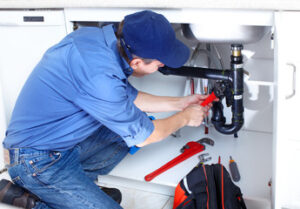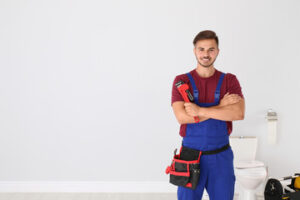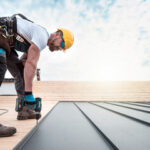Home » Posts tagged 'residential plumbers'
Tag Archives: residential plumbers
Why You Should Have Your Plumbing Inspected
When pipes leak, it can cause damage that requires expensive repair and replacement. Regular maintenance can help prevent problems.

Plumber Westminster does much more than unclog toilets and fix sinks. They design piping systems that disperse water, remove waste, and connect heating and cooling systems. They also inspect plumbing fixtures and pipes for damage and leaks.
A plumbing inspection involves a close examination of all the pipes and fixtures within your home. This includes the water heater, kitchen and bathroom sinks, dishwasher, washing machine, toilets, and any other water-using appliances. In addition, plumbers inspect the drain lines and sewer systems for any leaks or blockages. This is especially important for older homes with aging pipes. Leaks and blocked drains can cause serious damage to your property if left untreated. In some cases, a simple leak or blocked drain can even lead to flooding in your home. These issues are easy to ignore when they occur intermittently, but a regular plumbing inspection can catch them before they become major problems.
Besides being costly, a faulty plumbing system can also pose health and safety risks for your family. Hidden leaks can result in mold growth that affects indoor air quality and triggers respiratory problems. Additionally, if the leaks are located near electrical fixtures, they can create a fire hazard. A professional plumbing inspection can identify these risks and take the necessary steps to correct them.
Plumbing inspections can also save you money on your utility bills. Leaky faucets, toilets, and pipes waste gallons of water every day. A plumber can repair these leaks and improve your home’s water efficiency, saving you money on your monthly bills.
In addition, a regular plumbing inspection can help you extend the life of your pipes and fixtures. By identifying any parts that are approaching their lifespan, you can have them replaced before they break down completely, which saves you money on repair costs and replacement expenses.
If you’re thinking of buying a new home, it’s essential to have the plumbing inspected before making the purchase. An inexperienced homeowner may not notice any issues with the plumbing, but a professional plumber can spot problems before they escalate into expensive repairs.
A plumbing inspection can be performed in conjunction with a home inspection or on its own. A typical plumbing inspection will include testing for water pressure, checking the location of leaks, evaluating fixture condition and functionality, and testing the sewer line for any signs of clogs or backflow. The plumber will also check the drainage system for any clogs or issues with the sump pump. In some instances, a plumber may also use video inspections to examine hard-to-reach areas of the plumbing system, such as under sinks and in the basement.
Water Pressure Testing
Water pressure testing is the process of evaluating the integrity and functionality of your home plumbing drain lines. By applying a controlled amount of water pressure to the drain lines, plumbers can determine if there are leaks, what size the leak is, and even locate its exact location within the pipe.
To perform a water line pressure test, plumbers first shut off all faucets and water-using appliances in your home (this includes your washing machine and even your ice maker). Then the plumber connects a pressure gauge to an outdoor spigot or to a convenient location where it can be easily monitored (like inside of a garage or basement). Then the tester gradually increases the pressure by turning on the water supply and monitoring the pressure with the gauge. Once the plumber reaches the desired test pressure, they will turn off the water supply and monitor the pressure for about 2 hours.
The plumber will be looking for any drops in the water pressure which can indicate a leak. A drop in water pressure can also be a sign that the plumbing drain lines are overloaded and that there may be a large amount of debris blocking the flow of water. The plumber can then locate the blockage, diagnose a potential issue and perform any necessary plumbing drain line repair or replacement.
Another use for water pressure testing is to evaluate the permeability of soil or rock formations prior to conducting any type of ground modification program. The plumber will insert the test pipe into the ground and then slowly increase the pressure while watching for a sudden drop in pressure that indicates air has entered the leak. This can help the plumber know if a leak is located in the existing pipes or if they will need to dig to find the problem.
Hydrostatic plumbing tests are a crucial part of maintaining your plumbing system, especially in areas with expansive clay soils that can cause foundation and plumbing problems. By having a professional conduct these inspections, homeowners and business owners can reduce the risk of leaks and other issues in their drain and plumbing lines and avoid costly repairs down the road.
Water Flow Rate Testing
As the weather gets hotter, well water pumping speeds increase, and a higher flow rate can strain the system and lead to pressure issues in your home. Having your water flow tested by a professional can help you determine the optimal water pressure for your household needs, ensuring that there is always enough pressure to power your appliances and meet your household’s demands.
Consistent Water Supply
A lower water flow rate can lead to a shortage of water at critical times, such as during showers or halfway through washing the dishes. This can be frustrating and inconvenient, not to mention a significant drain on your household’s energy bills. A routine well flow test can ensure that your household’s daily water demand is met, preventing any unnecessary hassle or stress.
Low water flow rates can also be caused by a blockage or build-up in your pipes. Mineral deposits and debris can accumulate over time, restricting the flow of water through your pipes, causing poor water pressure. Having your pipes cleaned or descaled on a regular basis can prevent these problems from developing and improve your household’s water flow.
If you are considering purchasing a home with a private well, having a well flow test done can help ensure that your household’s water needs will be met by the well’s capabilities and design. A professional can evaluate your household’s average water consumption and design your well to produce an adequate number of gallons per minute.
Testing the well’s flow rate is important for residential homeowners that use a private water well for their home’s plumbing systems. A well flow test can help determine if the current well system is able to keep up with a homeowner’s water usage demands, and whether any adjustments or repairs need to be made to the well pump and water distribution system.
Performing a well flow test is simple, but requires some knowledge of how to do it and the correct equipment. The first step in a well flow test is to take a static pressure reading at the static/residual hydrant. This pressure must be a minimum of 10% lower than the reading taken at the flow hydrant. The next step is to open the hydrant and run a full well flow test. When the well flow test is complete, close the hydrant slowly.
Drainage and Venting Inspection
Plumbing inspectors assess the condition of water and waste pipes, fixtures like sinks, toilets and bathtubs, and appliances like dishwashers and water heaters. They look for leaks, signs of corrosion and other problems. They also check for proper installation and code compliance. Plumbers collaborate with other professionals such as construction teams and architects to ensure plumbing is seamlessly integrated into building projects and meets all required standards and regulations.
Pipes are usually hidden from view, running through walls, under floors and in the ground. Leaking or broken pipes may not be obvious until the system stops working or a meter registers high water usage. Professional plumbers have specialized tools and training to identify problem areas, even those that are out of sight or hard to reach. They can use noninvasive methods like video camera inspection to get a close-up look at inside pipes without digging up the entire yard or tearing open walls.
After examining visible supply lines, drain pipes and fixtures, a plumber will test the water pressure at each fixture and run a camera through the vents to see what’s going on underground. They’ll also time how long it takes for a sink, tub or shower to drain to test the drainage rate. Slow-draining or gurgling noises indicate potential obstructions that a plumber can clear.
Unsafe and inefficient plumbing can lead to clogged drains, sewer backups and other costly problems. Inspectors look for issues such as insufficient slope of waste drain lines, faulty venting, improper material usage and other factors that require correction.
Regular inspections help homeowners avoid expensive repair bills and maintenance costs. They can spot small problems that are easy to fix, such as a clogged faucet or worn-out washers and valves. Inspectors can also recommend energy-efficient upgrades, such as water-saving fixtures and piping materials that reduce waste and utility bills.
The Different Types of Plumbing
Plumbing is a vital system for bringing water into and draining waste water from buildings. It involves pipes, fixtures, and appliances. It also includes process piping that conveys gases, chemicals, and other fluids for industrial applications.

A broken pipe can lead to costly repairs and property damage. It’s important to catch problems early by checking your water and sewage bills. Contact Plumbing Express, Inc. for professional help.
Pipe lining is a trenchless method for repairing damaged, clogged, or broken pipes. It is a much less costly option than pipe replacement and is less disruptive to your home or business. It is also faster and more durable. This method creates a tough pipe within your existing pipes, which promotes a smoother flow of water and seals cracks and leaks. It can also help prevent root infiltration. This technique is also more environmentally friendly than traditional methods of piping.
This process involves using a special felt liner saturated with epoxy and placed in the pipe. The liner is then inflated with an internal bladder until it covers the entire inside surface of your old pipe. Once the liner is in place, it is cured by heat or ultraviolet light. Once the liner is cured, the bladder is removed and the new pipe is ready to be used. This method can be used for both sewer and storm drains.
CIPP pipe lining is also known as a “pipe-within-a-pipe” or “slip lining.” It is an alternative to traditional sewer repair and can be used for any type of pipe, including clay tile pipes, cast iron, ABS plastic, and PVC. This method is less expensive than other trenchless pipe repairs and can be completed in as little as a few hours.
Before the CIPP process begins, your plumber will use video inspection technology to determine where the damage is located and map out a plan for repair. They will then remove any roots that are blocking the sewer lines. They will also set up a sewer bypass system, if necessary, to reroute wastewater to other pipes during the pipe lining process. A vactor truck or sewer vacuum will be used to keep the area free of debris and water during the lining process.
During the pipe lining process, your technician will clean and score the outside of the pipe, which allows the epoxy to adhere to the host pipe. They will then saturate a felt liner with potable water-safe epoxy and insert it into the damaged pipe. The liner will be inflated and allowed to cure for about 24 hours. Once cured, the liner will be inspected for a successful outcome. It should not reduce the pipe’s diameter or restrict sewage flow, and it should be resistant to further corrosion or deterioration.
Pipe pulling
Pipe pulling is a trenchless rehabilitation technique that involves attaching a new pipe to the old one and pulling it into the ground as the old one is pulled out. It uses the route of the existing pipe to prevent the need for further excavation and spoil removal. It’s also more efficient than digging and reduces the risk of utility strikes. It’s particularly useful for small diameter piping.
A specialized machine called a “rod puller” is used for this process. It is paired with a backhoe to provide the power needed to get the new pipe through. A chain connected to the puller is threaded through the entry and exit pits to connect to the old and new pipes. This chain pulls the new pipe into place.
The first step in the process is to prepare the area where the new pipe will be installed. This includes excavating two pits, one for the entrance and one for the exit of the old pipe. The rod puller is then lowered into the exit pit. A winch system is then connected to the rod puller and to a cone shaped bursting head that has been attached to a trailing HDPE pipe. As the bursting head is pulled through the old pipe, it breaks apart the host pipe into fragments and leaves a path for the trailing pipe.
When the bursting head reaches the old pipe, it expands and breaks the old pipe into pieces. It then creates a space that is filled by the new pipe, which is then heat-welded above ground. This method allows contractors to replace older sanitary sewer and water lines without disrupting the surrounding landscape.
This is a versatile, cost-effective option for pipeline replacement, especially in urban environments where there are many buildings in close proximity to the construction site. It also helps reduce the risk of damage to existing underground infrastructure. It’s a great choice for residential and commercial applications, as well as for water and sewage lines.
This trenchless technology allows contractors to install the new pipes using a specialized bursting head that splits and expands the old pipe. It’s the same principle as cured-in-place piping, but it doesn’t require any excavation. The bursting head displaces the fragments of the old pipe into the soil, creating a space that is then filled by the new pipeline. It’s suitable for a variety of ground conditions, including clay, silt, and generally soft cohesive material.
Pipe cleaning
With all of the responsibilities that come with owning a home, pipe cleaning can be easy to neglect. However, this important task is a crucial part of maintaining your pipe’s quality. Regular pipe cleaning can prevent the build-up of tar and other debris. It also helps keep the water flowing properly and protects the pipes from damage.
There are many different ways to clean a pipe. Some methods are chemical while others are mechanical. The method you choose depends on the type of debris you’re dealing with and the condition of your pipe. Some methods require depressurization and shutting down the pipeline, while others only require a quick flush or swab. Regardless of which method you choose, it’s important to document the process and results.
If you’re looking for a quick and easy way to clean your pipe, try using rubbing alcohol and coarse salt. The isopropyl alcohol breaks down the sticky resin and coarse salt acts as an abrasive to scrub away the gunk. You can find these items at your local pharmacy or drugstore. You can also use this method on wooden pipes, but make sure to apply a coat of olive oil afterwards. This will give your pipe a great shine and help it last longer.
Specialty pipe cleaning removes the buildup of bacteria that can affect a pipe’s water quality and lead to operational concerns. This is commonly referred to as biofilm, and it can be extremely harmful if enough of it builds up. Specialty pipe cleaning removes the bacteria and restores a clean, high-quality water supply.
To start, remove your pipe from its rack and wipe it down with a cloth or paper towel. Next, rub the rim of your pipe with a cotton swab to remove any residue. Once your pipe is clean, add a pinch of coarse salt to the resealable plastic bag and pour in rubbing alcohol. You can also use mouthwash or vinegar, but be careful not to damage the color of your pipe with harsh chemicals. Add a toothpick or a cotton swab to plug the holes in the bag, and shake it for up to 2 minutes.
Pipe replacement
If you have a leaky pipe that cannot be repaired, it may be time to consider a pipe replacement. Depending on the type of pipe and how severe the damage is, this method can be done either with or without excavating the area. Pipe replacement is typically a quicker, more cost-effective option than repair, but it can also be more disruptive to the property. During this process, a new pipe is installed in its place, which can require the removal of drywall, tiles, or other finishes.
Some signs that your pipes are in need of replacement include cracking, heavy wear, leaking, and rusting. These symptoms can cause damage to floors, walls, and drywall, and they can even lead to contaminated drinking water. If you notice any of these problems, it is a good idea to call a plumber immediately.
During pipe replacement, a professional plumber will use tools to remove the old pipes and install a new one in their place. The plumber will then test the new pipes for leaks and verify that they are functioning correctly. After the testing is complete, the plumber will clean up the site and restore any affected areas.
In some cases, a full pipe replacement is needed to ensure your plumbing system is safe and efficient. This is particularly true for older pipes that have been damaged by corrosive materials or those that are made from brittle materials. Pipe replacement also helps to increase the lifespan of your plumbing pipes, especially if you are upgrading to modern, safer materials.
It is important to understand the difference between pipe relining and traditional pipe replacement before choosing which option is best for your home. During the pipe relining process, a flexible liner that is coated in resin is inserted into the existing pipe. This creates a new pipe inside the old one, which is stronger and more durable. This technique is often used in difficult-to-reach places, such as under buildings or behind walls. However, it is not suitable for all pipes. For example, it is not recommended for pipes that supply drinking water.




